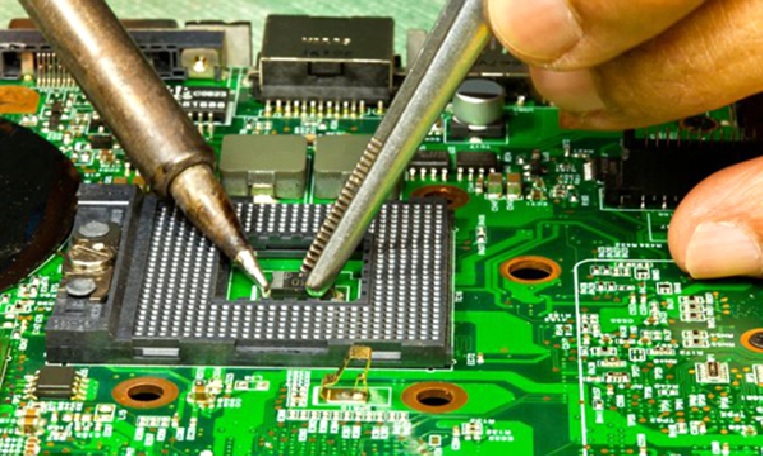LED PCB Assembly: Meaning, Process, and Why It Matters
LED PCB assembly is the process of mounting light-emitting diodes onto a printed circuit board to create compact, reliable, and efficient lighting modules. This type of assembly is essential in modern lighting systems because it integrates LEDs with thermal-conductive PCB materials, allowing high-brightness operation without overheating. LED PCB assembly ensures stable performance, longer lifespan, and consistent illumination across small and large-scale lighting applications.
Why LED PCB Assembly Is Important
LED lighting relies on efficient heat control, electrical stability, and compact design. LED PCB assembly supports all these needs by using thermally conductive substrates, most commonly aluminum PCBs or metal-core printed circuit boards. These materials help maintain the right temperature even when LEDs operate at high intensity. A professionally assembled LED PCB also improves energy efficiency, reduces power loss, and ensures better durability for harsh environments such as automotive lighting or outdoor signage. This is why LED PCB assembly has become the foundation for modern LED-based electronics.
Types of PCBs Used in LED PCB Assembly
Aluminum PCBs
Aluminum-based boards are the most commonly used in LED PCB assembly due to their excellent thermal management capabilities. They dissipate heat quickly and offer mechanical stability, making them ideal for high-power LED applications like streetlights, flood lights, and industrial lamps.
FR4 PCBs
Standard FR4 PCBs are used for low-heat or small LED systems. Although they have lower thermal conductivity, they perform well in compact LED modules, indicator lights, and household lighting where heat generation remains minimal.
Copper and Other Metal-Core PCBs
Specialized high-performance LED lighting systems use copper-based MCPCBs for even greater thermal efficiency. These are typically found in automotive headlights, aerospace lighting, and advanced medical devices where reliability is critical.
How the LED PCB Assembly Process Works
Design and Layout Preparation
The LED PCB assembly process begins with creating an optimized circuit layout based on LED power output, heat flow, and electrical characteristics. Engineers determine the best trace design, thermal vias, and substrate type to ensure efficiency and longevity.
Solder Paste Application
Once the board is ready, solder paste is applied across the pads using a stencil. This step ensures that LEDs and other components attach firmly and maintain stable electrical connections.
LED Placement
Pick-and-place machines accurately mount the LEDs onto the PCB. LED positioning must be highly precise to ensure even brightness, consistent color temperature, and uniform thermal distribution.
Reflow Soldering
The board passes through a reflow oven, melting the solder paste and bonding the LEDs to the PCB. The temperature profile is carefully controlled to avoid damaging sensitive LED chips and lenses.
Inspection and Testing
After reflow, the assembled board undergoes optical inspection, electrical testing, and thermal evaluation. This ensures proper illumination, correct polarity, stable current flow, and long-term reliability under operating temperatures.
Applications of LED PCB Assembly
Consumer Electronics
LED PCBs are widely used in televisions, smart lighting systems, computer displays, and household appliances. Their compact size and low heat output make them ideal for sleek, modern designs.
Automotive Lighting
Car manufacturers rely on LED PCB assembly for headlights, tail lights, daytime running lamps, and interior lighting modules. These boards must handle high temperatures, vibrations, and long operational cycles.
Industrial and Commercial Lighting
Factories, warehouses, signage systems, and large outdoor installations use LED PCBs for strong illumination and long-term energy savings. The durability of aluminum LED PCBs makes them perfect for continuous operations.
Medical and Aerospace Devices
LEDs used in surgical lamps, diagnostic machines, cockpit panels, and navigation systems require highly precise assembly and reliable thermal management. LED PCB assembly ensures these critical systems perform safely and consistently.
Key Advantages of LED PCB Assembly
Superior Heat Dissipation
LEDs generate heat despite being energy-efficient. LED PCB assembly, especially with metal-core materials, ensures this heat is dispersed quickly to maintain performance.
Higher Efficiency and Brightness
Well-designed LED assemblies deliver higher lumen output and consume less power compared to traditional lighting methods. The assembly process prevents power losses and improves electrical conductivity.
Durability and Longer Lifespan
Professional LED PCB assembly results in stronger joints, stable LED positioning, and lower heat stress. This extends the service life of both the LEDs and the overall lighting system.
Conclusion: Build High-Quality LED Lighting With Professional Assembly
LED PCB assembly plays a crucial role in ensuring stable performance, high brightness, and long-lasting reliability for every type of lighting application. Whether you are developing LED strips, industrial lamps, signage systems, or automotive modules, choosing expert assembly will directly impact quality, heat management, and energy efficiency. If you want dependable production support at scale, now is the right time to work with experienced China PCB assembly services to achieve consistent performance and competitive pricing for your LED projects.






![[Pii_Email_8dd6bcefcecdc6a73ef7] Error](https://trendy2news.com/wp-content/uploads/2021/09/Remove-the-Pii_Email_8dd6bcefcecdc6a73ef7-Error-768x401.jpg)
